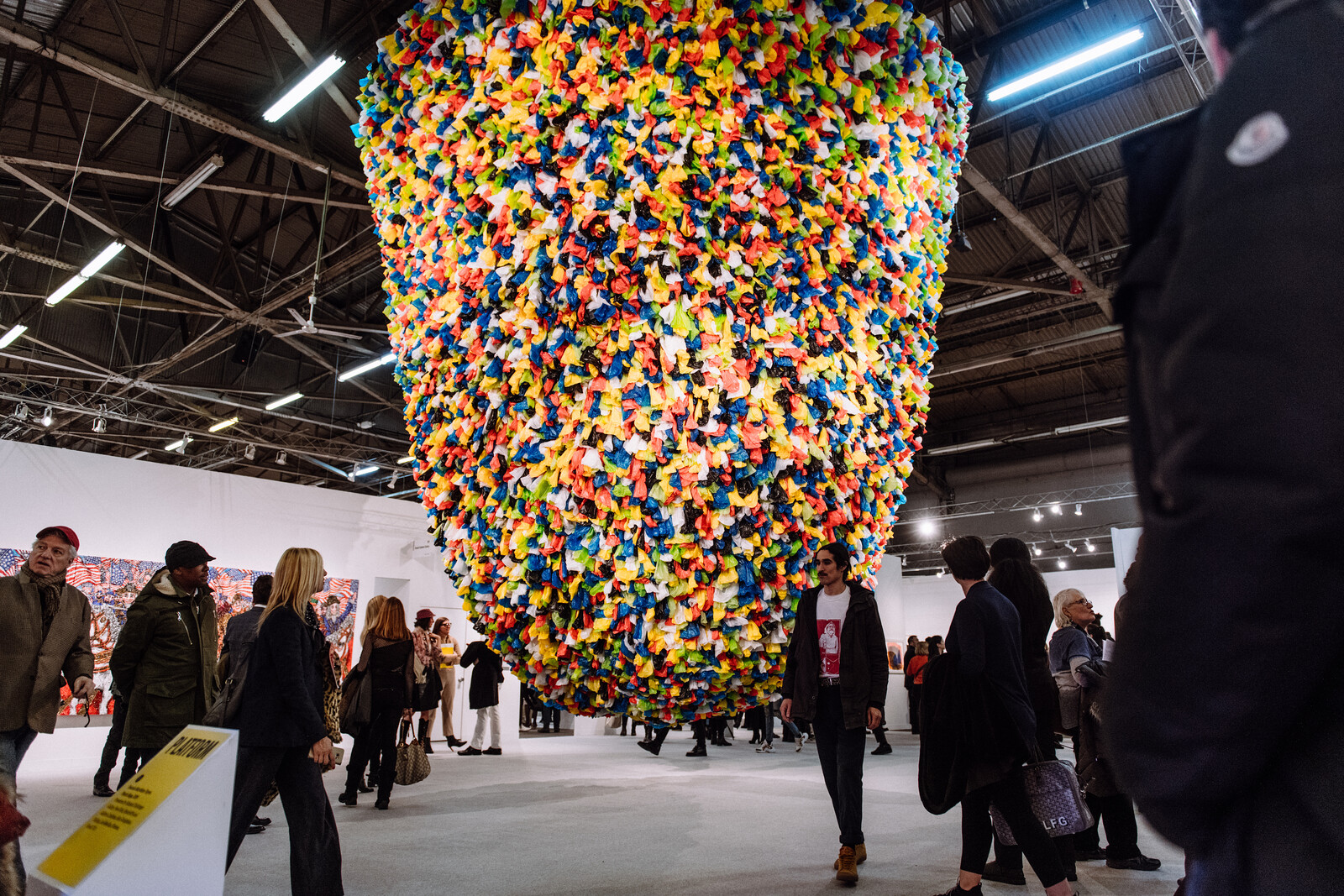Categories
Subjects
Authors
Artists
Venues
Locations
Calendar
Filter
Done
March 26, 2019 – Feature
New York City Roundup
Amy Zion

Twenty-five years ago, a group of young dealers, including Pat Hearn, Colin de Land, and Matthew, Marks started the first contemporary art fair in New York at the Gramercy Park Hotel. Titled the Gramercy International Art Fair, it spanned floors 12, 14, and 15 (there is no 13, of course) of the hotel, with each gallery taking over a room or suite. In the first iteration in 1994, Tracey Emin slept in the bed in the room where her work was displayed (by Jay Jopling/White Cube). In 1997, Holly Solomon installed two TV screens as part of a work by Nam June Paik in her room’s bathtub. After outgrowing the hotel, in 1999, the fair moved to the original site of the infamous 1913 Armory Show and changed its name. Now it fills two West Side piers and includes a modern/twentieth-century art portion alongside the contemporary. There are more fairs that share the week with the Armory—the Independent, which celebrated its 10th anniversary, Volta (more on that later), and Spring Break, among others.
Amid talks and other initiatives marking the quarter-century celebrations, at the fair there was a room several booths wide that included documentation and restaging of works from the …
March 21, 2017 – Feature
78th Whitney Biennial
Chris Sharp

The stakes surrounding this Whitney Biennial are, to say the least, high. Indeed, it’s hard to imagine a biennial being under more pressure to signify, to mean, to produce meaning, to attempt to offer some special and tangible insight into our current moment. Instead, what the curators Christopher Lew and Mia Locks offer is art. This is not to say, of course, that the art presented here is divorced from our current harrowing reality, by any means, but that it does not forfeit its unique transformative power in the face of it. Lew’s and Locks’s love of and faith in art is refreshingly unequivocal. Nor is this to say that the biennial they have curated is devoid of the political, insofar as one of the capacities of the political is to seek to imagine alternatives to the status quo. In the alternative imagined here, an ideal diversity and gender balance reigns. Of the agreeably modest and negotiable number of 63 artists and artist collectives, this biennial possesses more artists of color than any other in its past. That diversity is not limited to ethnicity, gender, and geography (artists hail from as far afield here as Puerto Rico and Seattle, although …